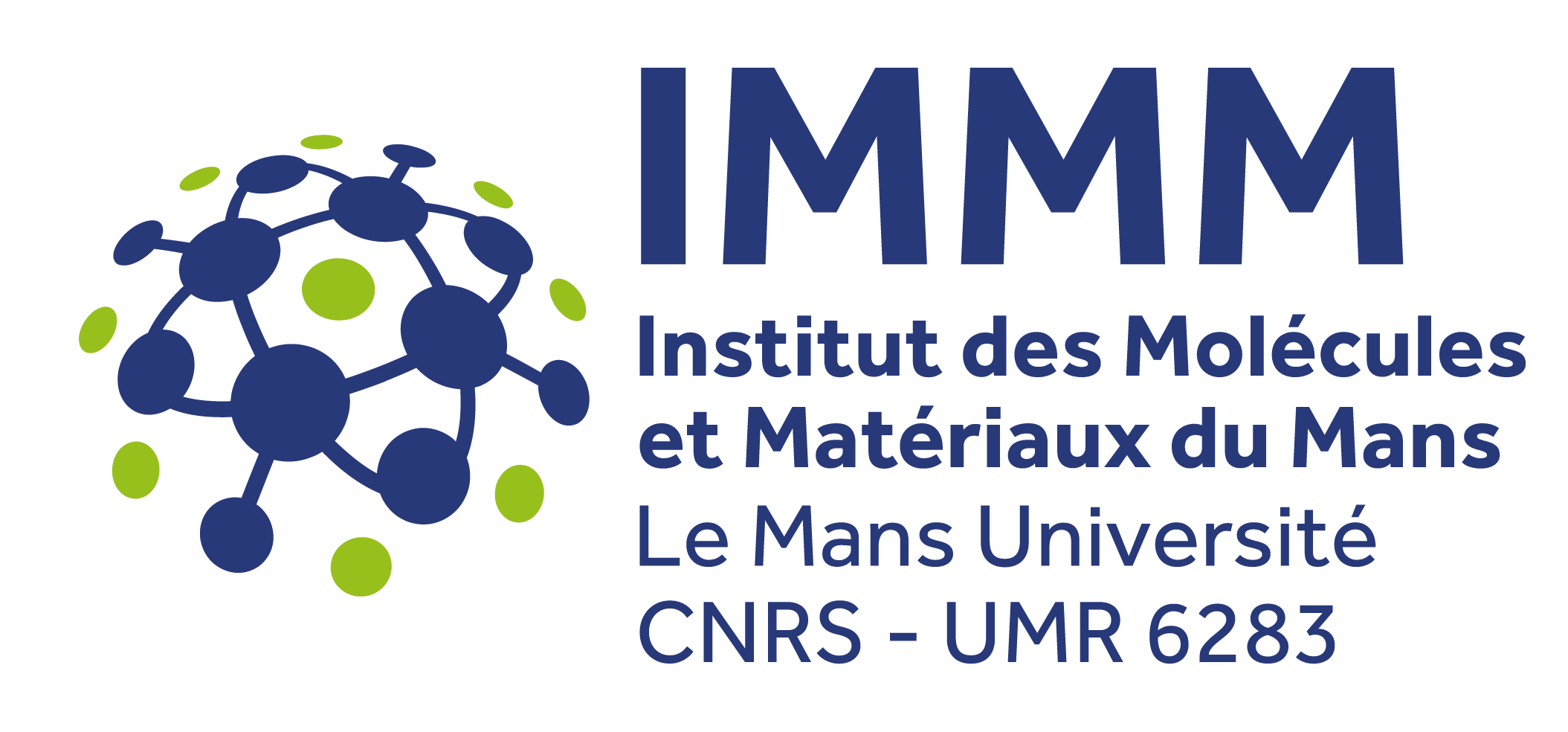Spin disorder versus Exchange bias coupling in magnetic nanoparticles with complex architecture (Hollow, shell/shell,…)

Spin disorder versus Exchange bias coupling in magnetic nanoparticles with complex architecture (core/shell, Hollow, shell/shell, ...)
Researchers: Nader Yaacoub, Rodaina Sayed Hassan, Ivan Labaye, Jean-Marc Greneche
Collaboration: D. Peddis (INSTM nM2-Lab, Universita degli Studi diGenova), S. Ammar (ITODYS, Paris)
Magnetic nanoparticles (MNPs) are of particular interest in the field of information storage and nanomedicine (hyperthermia, medical imaging, …). Thanks to their nanometric size, they can be guided using a magnetic field. Unfortunately, reducing the size of nanomagnets leads to magnetic instability (superparamagnetic) that is incompatible with technological applications. Modifying the shape of the MNPs (core-shell MNPs, Hollow MNPs, …) leads to an exaltation of surface/interface effects (spin disorder, exchange bias (EB) coupling, …) and an increase of the magnetic anisotropy. Although the macroscopic model of the EB effect has existed for nearly six decades, the microscopic origin of this phenomenon is still requiring further investigation in some specific nanoscale systems. A complete understanding of the correlation between spin structure, surface/interface effect, collective behavior and EB coupling is still lacking. In this context, we are studying this phenomenon in systems with different architectures from an experimental and numerical point of view. For example, using in-field Mössbauer spectrometry and numerical simulation, we have shown the existence of complex non-collinear magnetic structure in hollow iron oxide MNPs. Indeed, this structure consists of a ferrimagnetic layer of a few atomic planes confined between two layers with canted structure resulting from two antiferromagnetic coupled speromagnetic structures (figure below). Such a magnetic structure leads to an increase of the magnetic coupling between the interfacial moments of the magnetic phases and in definitive the magnetic stability of the nanostructure. We propose to extend this study to systems presenting high spin disorder, such as hollow NPs with different sizes and shell thicknesses and to shell/shell systems, that consist of two magnetic phases: a ferrimagnetic phase and an antiferromagnetic one, while taking in consideration the effect of dipolar interaction on spin disorder and EB. In addition, it was concluded from Mössbauer characterization and computer modeling that octahedral Fe units are preferentially located at the surface compared to tetrahedral units (to be published).
 Properties of hollow magnetic nanoparticles
Properties of hollow magnetic nanoparticles
Related recent papers:
- [1] G. Muscas, F. Congiu, G. Concas, C. Cannas, V. Mameli, N. Yaacoub, R. Sayed Hassan, D. Fiorani, S. Slimani and D. Peddis. The Boundary Between Volume and Surface-Driven Magnetic Properties in Spinel Iron Oxide Nanoparticles.
Nanoscale Research Letters, 2022, 17, 98.
- [2] D. Peddis, K. N. Trohidou, M. Vasilakaki, G. Margaris, M. Bellusci, F. Varsano, M. Hudl, N. Yaacoub, D. Fiorani, P. Nordblad & R. Mathieu.
Memory and superposition in a superspin glass.
Scientific Reports, 2021, 11, 7743.
- [3] S. Slimani, G. Concas, F. Congiu, G. Barucca, N. Yaacoub, A. Talone, M. Smari, E. Dhahri, D. Peddis, and G. Muscas.
Hybrid Spinel Iron Oxide Nanoarchitecture Combining Crystalline and Amorphous Parent Material.
Phys. Chem. C, 2021, 125, 10611.
- [4] M. Ghoshani, E. H. Sánchez, S. S. Lee, G Singh, N. Yaacoub, D. Peddis, M. Mozaffari, C. Binns, J. A. De Toro and P. S. Normile.
On the detection of surface spin freezing in iron oxide nanoparticles and its long-term evolution under ambient oxidation.
Nanotechnology, 2020, 32, 065704.
- [5] G. Franceschin, T. Gaudisson, S. Perez Quiros, N. Yaacoub, J-M. Greneche, N. Menguy, S. Mercone, F. Mazaleyrat and S. Ammar.
Exchange-bias features in nanoceramics prepared by spark plasma sintering of exchange-biased nanopowders.
Mater. Chem. C, 2020, 8, 5941.
- [6] N. Flores-Martinez, G. Franceschin, T. Gaudisson, S. Haj-Khlifa, S. Gam Derouich, N. Yaacoub, J-M. Grenèche, N. Menguy, R. Valenzuela & S. Ammar.
On the first evidence of exchange bias feature in magnetically contrasted consolidates made from CoFe2O4-CoO core-shell nanoparticles.
Scientific reports, 2019, 9, 19468.
- [7] Z. Nehme, Y. Labaye, N. Yaacoub, J.-M. Grenèche
An atomic scale Monte Carlo study of exchange bias in homogeneous/inhomogeneous core/shell Fe3O4/CoO nanoparticles
Nanopart. Res., 2019, 21, 209.
- [8] N. Yaacoub, H. Mortada, Z. Nehme, J.-M. Greneche
Chemical Inhomogeneity in Iron Oxide@ CoO Core–Shell Nanoparticles: A Local Probe Study Using Zero-Field and In-Field 57Fe Mössbauer Spectrometry.
Journal of nanoscience and nanotechnology, 2019, 19, 5014.
- [9] G. Franceschin, T. Gaudisson, N. Menguy, B. C. Dordill, N. Yaacoub, J.-M. Greneche, R. Valenzuela, S. Ammar.
Exchange‐Biased Fe3−xO4‐CoO Granular Composites of Different Morphologies Prepared by Seed‐Mediated Growth in Polyol: From Core–Shell to Multicore Embedded Structures.
Part. Part. Syst. Charact., 2018, 35, 1800114.
- [10] N. Flores-Martinez, G. Franceschin, T. Gaudisson, P. Beaunier, N. Yaacoub, J.-M. Greneche, R. Valenzuela, S. Ammar.
Giant exchange-bias in polyol-made CoFe2O4-CoO core-shell like nanoparticles.
Part. Part. Syst. Charact., 2018, 35, 1800290.
- [11] F. Sayed, N. Yaacoub, Y. Labaye, R. Sayed Hassan, G. Singh, P. Anil Kumar, J.-M. Greneche, R. Mathieu, G. C. Hadjipanayis, E. Agostinelli, D. Peddis.
Surface Effects in Ultrathin Iron Oxide Hollow Nanoparticles: Exploring Magnetic Disorder at the Nanoscale.
Phys. Chem. C, 2018, 122, 7516.
- [12] M. Vasilakaki, G. Margaris, D. Peddis, R. Mathieu, N. Yaacoub, D. Fiorani, and K. Trohidou.
Monte Carlo study of the superspin glass behavior of interacting ultrasmall ferrimagnetic nanoparticles.
Phys. Rev. B, 2018, 97, 094413.
Projects:
ANR OBNAREM (2014 – 2018)
PICS France – Italy (2014 – 2017)







